Growing Your Own Broccoli: A Guide for Home Gardeners
Published: November 15, 2025 at 10:21:51 AM UTC
Broccoli is a nutritional powerhouse that rewards home gardeners with crisp, flavorful heads when grown correctly. While it has a reputation for being somewhat challenging, understanding its specific needs and timing will help you grow abundant harvests.
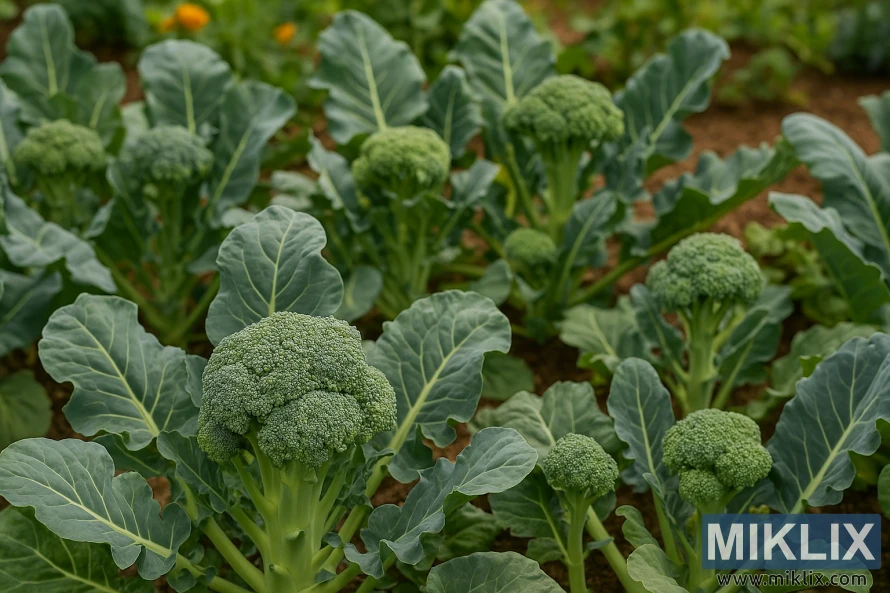
This guide walks you through every step of growing broccoli successfully, from selecting the right varieties to harvesting at the perfect moment for optimal flavor and nutrition.
Understanding Broccoli: A Cool-Season Crop
Broccoli thrives in cool weather and produces nutritious heads packed with vitamins and minerals
Broccoli (Brassica oleracea, Italica Group) belongs to the cabbage family alongside cauliflower, kale, and Brussels sprouts. As a cool-season crop, it performs best when temperatures range between 65°F and 70°F (18°C to 21°C). The edible portion we harvest is actually the flower head before it blooms, making timing crucial for success.
Home-grown broccoli offers exceptional nutrition, containing high levels of vitamin C, vitamin K, fiber, and beneficial antioxidants. The plant forms a central head (crown) first, followed by smaller side shoots that continue producing for weeks after the main harvest, giving you multiple harvests from a single plant.
Understanding broccoli's temperature preferences is key to success. It can tolerate light frost but will bolt (flower prematurely) when temperatures consistently rise above 80°F (27°C). This temperature sensitivity makes proper timing and variety selection essential for a successful harvest.
Best Broccoli Varieties for Your Garden
Selecting the right broccoli variety for your climate and growing season significantly impacts your success. Here are some top-performing varieties for different situations:
Spring Planting Varieties
- Green Magic - Heat-tolerant with medium-sized blue-green heads, ideal for regions with warm springs
- Packman - Early maturing (55 days) with uniform, large heads and good side-shoot production
- Gypsy - Mid-season variety with excellent heat tolerance, perfect for unpredictable spring weather
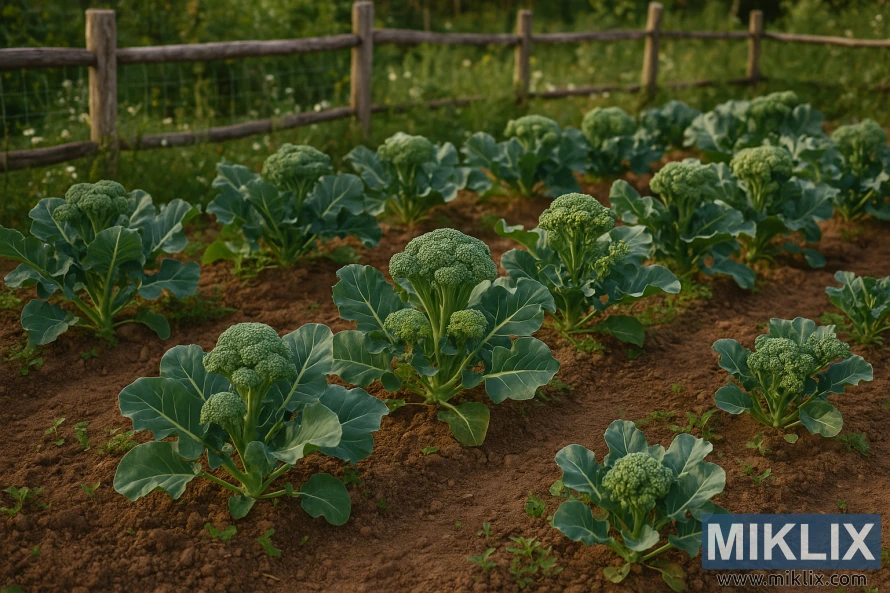
Fall Planting Varieties
- Arcadia - Late-maturing with small domed heads, excellent for fall production and cold tolerance
- Marathon - Late-maturing with blue-green heads, stands up well to cold temperatures
- Calabrese - Heirloom variety with large heads and prolific side shoots, excellent for fall planting
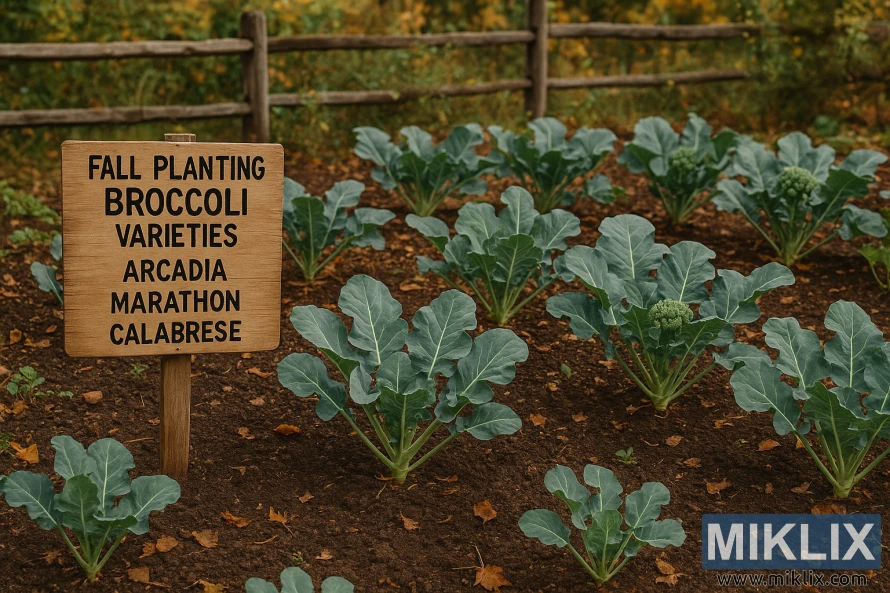
Container-Friendly Varieties
- Waltham 29 - Compact plants with 4-8 inch heads, ideal for containers at least 18 inches deep
- De Cicco - Italian heirloom that produces numerous small heads instead of one large head
- Green Goliath - Heat-tolerant with giant heads and prolific side shoots, adaptable to container growing
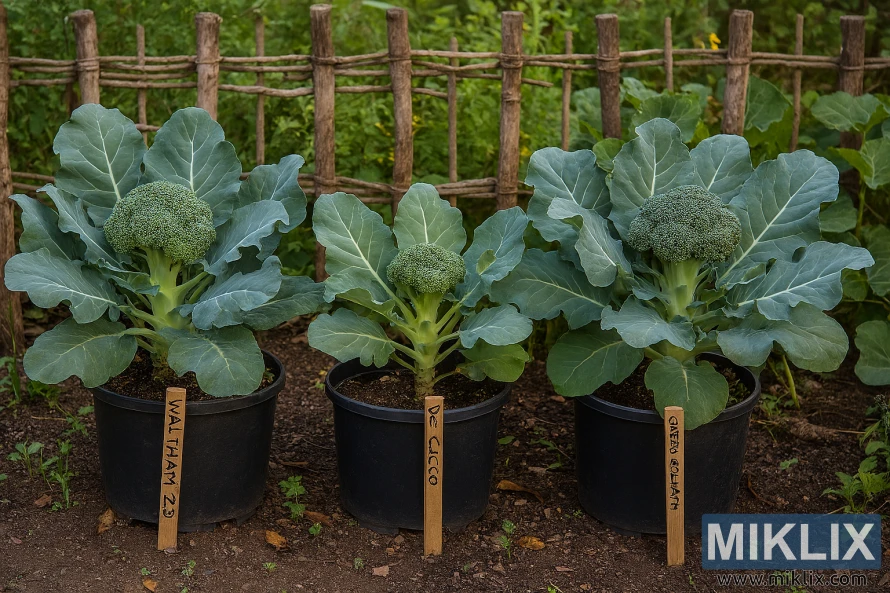
When selecting varieties, consider your local climate patterns and typical seasonal temperatures. Heat-tolerant varieties are essential for warmer regions, while cold-tolerant types perform better in areas with early frosts. For extended harvests, plant multiple varieties with different maturation times.
Preparing Your Soil for Broccoli
Broccoli thrives in fertile, well-draining soil with plenty of organic matter
Broccoli is a heavy feeder that requires nutrient-rich soil to produce robust heads. Proper soil preparation is crucial for success:
Soil Requirements
- pH Level: Broccoli prefers slightly acidic to neutral soil with a pH between 6.0 and 7.0. Test your soil and add lime if needed to raise pH or sulfur to lower it.
- Soil Structure: Well-draining soil is essential to prevent root rot. Broccoli grows best in loamy soil that retains moisture without becoming waterlogged.
- Organic Matter: Incorporate 2-4 inches of compost or well-rotted manure into your soil before planting to improve fertility and structure.
Preparing the Planting Area
- Clear the area of weeds and debris.
- Dig the soil to a depth of 8-12 inches, breaking up any compacted areas.
- Mix in 2-4 inches of compost or aged manure.
- Add a balanced organic fertilizer according to package directions.
- Rake the area smooth and water thoroughly before planting.
For container growing, use a high-quality potting mix enriched with compost. Containers should be at least 18 inches deep and wide to accommodate broccoli's extensive root system and provide stability for the top-heavy plants.
Crop Rotation Tip: Avoid planting broccoli where other brassicas (cabbage, cauliflower, kale, etc.) have grown in the past three years to prevent disease buildup in the soil.
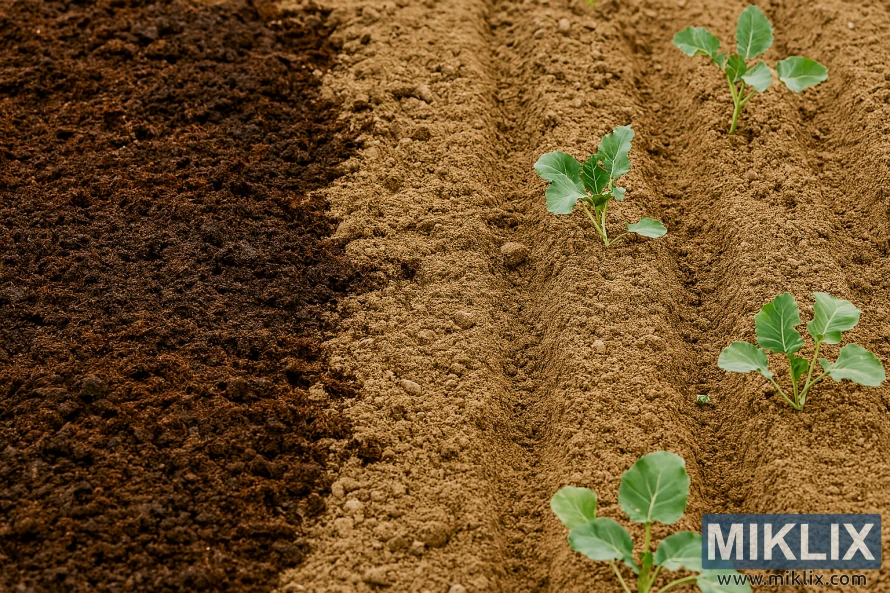
Planting Timeline for Successful Broccoli
Proper timing and spacing are crucial for broccoli success
Timing is everything when growing broccoli. Since it's a cool-season crop that bolts in heat, planning your planting schedule around your local climate is essential:
| Climate Zone | Spring Planting | Fall Planting | Days to Maturity |
| Cold (Zones 3-5) | Start seeds indoors 6-8 weeks before last frost; transplant 2-3 weeks before last frost | Direct sow in mid-summer (June-July) | 60-85 days |
| Moderate (Zones 6-7) | Start seeds indoors 8-10 weeks before last frost; transplant 3-4 weeks before last frost | Start seeds indoors in July; transplant in August | 55-80 days |
| Warm (Zones 8-10) | Start seeds in January; transplant in February | Start seeds in August; transplant in September | 50-75 days |
Spacing Requirements
- Between Plants: Space broccoli plants 18-24 inches apart to allow proper air circulation and room for growth.
- Between Rows: Allow 24-36 inches between rows for easy access and maintenance.
- Depth: Plant seedlings slightly deeper than they were in their containers, with the lowest leaves just above soil level.
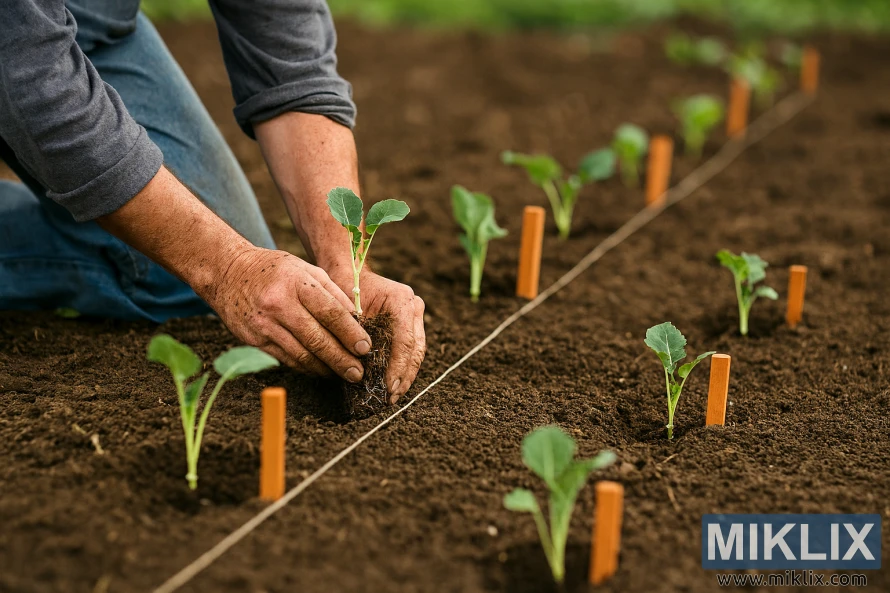
Optimal Growing Conditions for Broccoli
Sunlight Requirements
Broccoli needs full sun to develop properly, which means at least 6-8 hours of direct sunlight daily. In warmer climates, some afternoon shade can help prevent bolting during late spring plantings.

Watering Needs
Consistent moisture is crucial for broccoli. Provide 1-1.5 inches of water weekly, keeping the soil evenly moist but not waterlogged. Water at the base of plants to keep leaves and developing heads dry, which helps prevent disease.
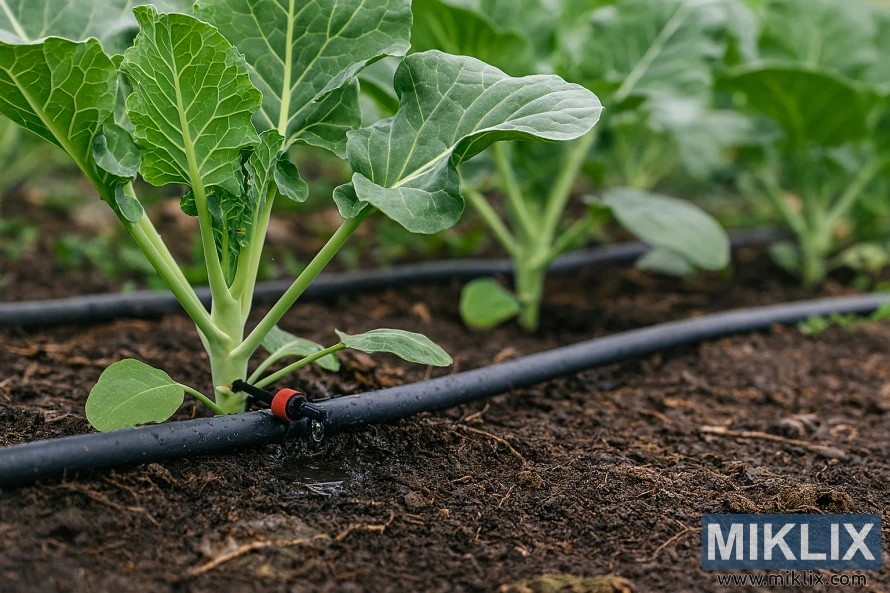
Temperature Range
Broccoli grows best when temperatures stay between 65°F and 70°F (18°C to 21°C). It can tolerate light frost but will bolt when temperatures consistently exceed 80°F (27°C). Use row covers for unexpected cold snaps.

Mulching for Success
Apply a 2-3 inch layer of organic mulch (straw, shredded leaves, or grass clippings) around broccoli plants to:
- Conserve soil moisture
- Suppress weed growth
- Regulate soil temperature
- Add organic matter as it breaks down
Fertilizing Your Broccoli Plants
Regular feeding helps broccoli develop large, nutritious heads
Broccoli is a heavy feeder that requires consistent nutrition throughout its growing cycle. A proper fertilization schedule ensures robust plants and large, flavorful heads:
Organic Fertilization Schedule
| Growth Stage | Fertilizer Type | Application Rate | Method |
| Before Planting | Compost or aged manure | 2-4 inches worked into soil | Mix thoroughly into top 8-12 inches of soil |
| At Transplanting | Balanced organic fertilizer (5-5-5) | As directed on package | Mix into planting hole |
| 3 Weeks After Transplanting | High-nitrogen organic fertilizer | 1/2 cup per plant | Side-dress 4 inches from stem |
| Head Formation | Liquid fish emulsion or compost tea | As directed on package | Apply to soil around plant base |
Organic Fertilizer Options
- Compost: Provides slow-release nutrients and improves soil structure
- Fish Emulsion: Quick-release nitrogen source ideal for boosting growth
- Alfalfa Meal: Balanced nutrition with growth-stimulating properties
- Blood Meal: High-nitrogen option for leafy growth (use sparingly)
- Compost Tea: Liquid fertilizer that also adds beneficial microbes
Caution: Over-fertilizing with nitrogen can produce lush leaves at the expense of head formation. Follow application rates carefully and reduce nitrogen once heads begin to form.
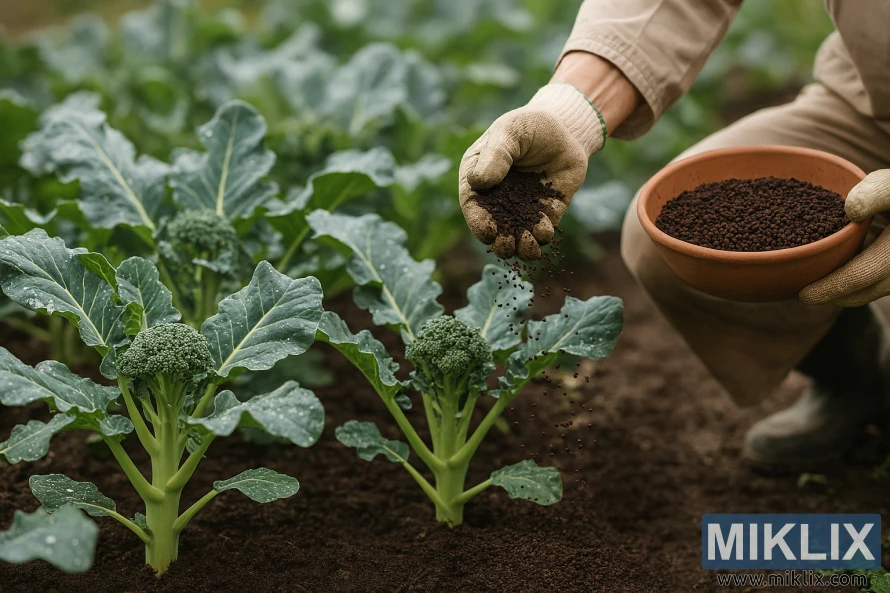
Managing Pests and Diseases Organically
Beneficial insects like ladybugs are valuable allies in organic pest management
Broccoli can attract several pests and diseases, but with proactive organic management, you can protect your crop without harmful chemicals:
Common Pests
- Cabbage Worms: Green caterpillars that chew holes in leaves. Control with Bacillus thuringiensis (Bt) spray or by handpicking.
- Aphids: Tiny insects that cluster on leaves and stems. Control with strong water spray, insecticidal soap, or by attracting beneficial insects.
- Flea Beetles: Small jumping beetles that create small holes in leaves. Control with row covers or diatomaceous earth.
- Cabbage Root Maggots: Larvae that feed on roots. Prevent with cardboard collars around plant stems and crop rotation.
Common Diseases
- Clubroot: Fungal disease causing swollen, distorted roots. Prevent with crop rotation and maintaining soil pH above 6.8.
- Black Rot: Bacterial disease causing V-shaped yellow lesions on leaf edges. Prevent with clean seeds and tools, and proper crop rotation.
- Downy Mildew: Fungal disease causing yellow patches on upper leaf surfaces and gray fuzz underneath. Prevent with good air circulation and avoiding overhead watering.
- Alternaria Leaf Spot: Fungal disease causing dark spots with concentric rings. Control with proper spacing and removing affected leaves.
Preventive Strategies
- Use row covers immediately after planting to prevent insect access
- Practice crop rotation, avoiding planting brassicas in the same spot for 3-4 years
- Plant companion herbs like dill, rosemary, and thyme to repel pests
- Maintain proper spacing for good air circulation
- Water at the base of plants to keep foliage dry

Harvesting Broccoli for Peak Flavor
Harvest broccoli when the head is firm and the buds are tight and compact
Knowing when and how to harvest broccoli is crucial for the best flavor and continued production. The timing of your harvest can significantly impact taste and texture.
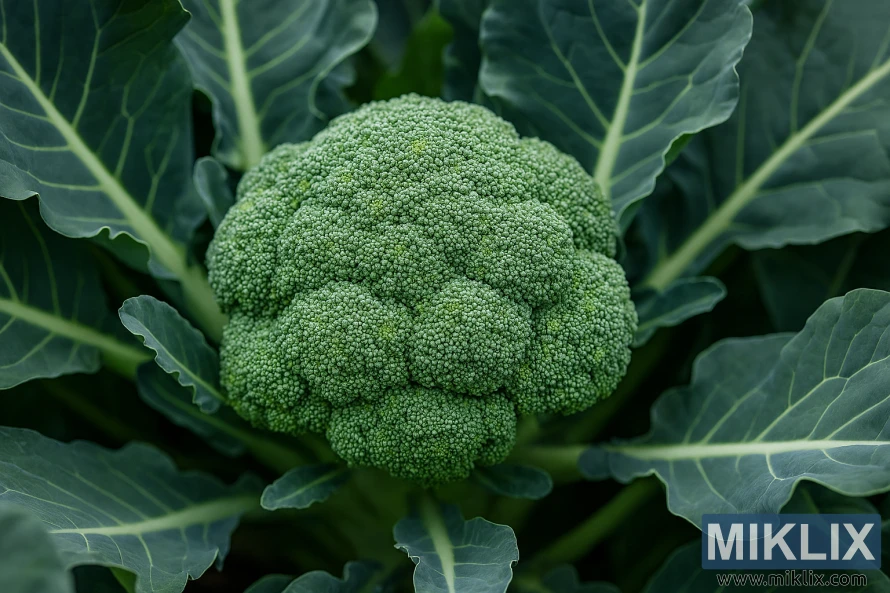
When to Harvest
- Harvest the main head when it's fully developed but before the flower buds begin to separate or show yellow
- Look for firm, tight clusters of small buds with a deep green or purplish-green color
- Mature heads typically measure 4-8 inches in diameter, depending on the variety
- Morning is the ideal harvest time when plants are well-hydrated and at their freshest
How to Harvest
- Use a sharp knife to cut the main stem at an angle about 5-6 inches below the head
- Leave the plant in place after harvesting the main head
- Continue to water and fertilize the remaining plant
- Harvest secondary side shoots as they develop, typically 1-2 inches in diameter
- Side shoots can continue producing for weeks or even months after the main harvest
After harvesting the main head, side shoots will continue to develop for additional harvests
Harvest Tip: If you notice the tight buds beginning to separate or show yellow flowers, harvest immediately regardless of size. Once flowering begins, the flavor becomes bitter and the texture deteriorates rapidly.

Storing and Preserving Your Broccoli Harvest
Proper storage maintains broccoli's flavor, texture, and nutritional value
Fresh broccoli is at its nutritional peak immediately after harvest. Proper storage and preservation techniques help maintain its quality and extend your enjoyment of the harvest:
Short-Term Storage (Fresh)
- Refrigeration: Store unwashed broccoli in a perforated plastic bag in the refrigerator crisper drawer for 7-14 days
- Hydro-Cooling: For maximum freshness, place stems in a jar with water (like cut flowers) and loosely cover heads with a plastic bag in the refrigerator
- Ethylene Sensitivity: Keep broccoli away from ethylene-producing fruits like apples, pears, and tomatoes, which accelerate spoilage
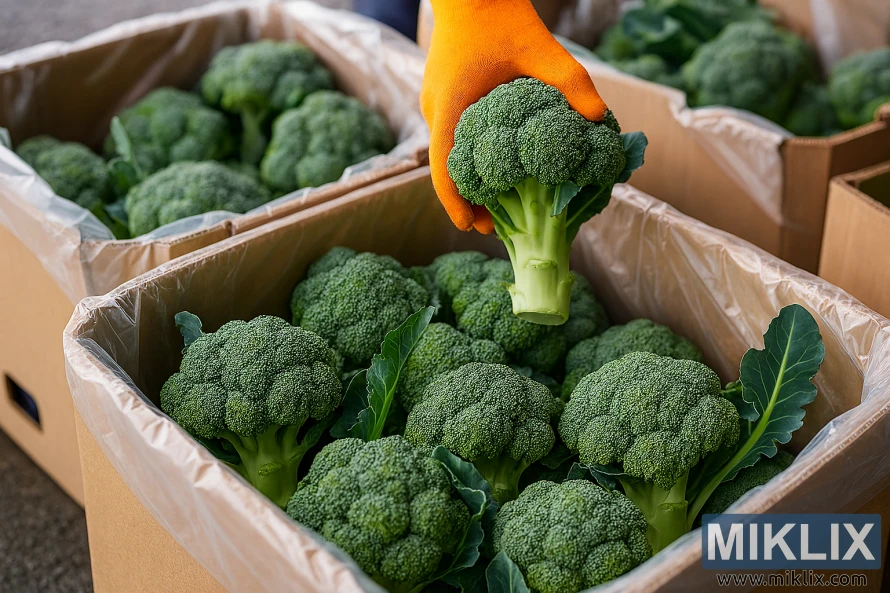
Long-Term Preservation Methods
| Method | Preparation | Storage Life | Best Uses |
| Freezing | Blanch for 2-3 minutes, cool in ice water, drain, and freeze in airtight containers | 10-12 months | Soups, stir-fries, casseroles |
| Fermenting | Chop and ferment with salt brine (2% salt solution) | 2-3 months refrigerated | Probiotic side dish, condiment |
| Dehydrating | Blanch for 2 minutes, cool, and dehydrate at 125°F until crisp | 6-12 months in airtight container | Soups, camping meals, broccoli powder |
| Pickling | Blanch briefly and preserve in vinegar brine with spices | 3-6 months refrigerated | Appetizers, charcuterie boards, snacking |
Troubleshooting Common Broccoli Growing Problems
Identifying problems early allows for timely intervention
Even experienced gardeners encounter challenges when growing broccoli. Here's how to identify and address common problems:
Why is my broccoli forming small heads or "buttoning"?
Buttoning occurs when plants form small, premature heads instead of developing full-sized ones. This is typically caused by:
- Temperature stress (exposure to temperatures below 40°F for extended periods)
- Transplant shock or root-bound seedlings
- Nitrogen deficiency
Solution: Protect young plants from cold with row covers, avoid transplanting root-bound seedlings, and ensure adequate nitrogen during the vegetative growth stage.
Why are my broccoli leaves turning yellow?
Yellowing leaves can indicate several issues:
- Bottom leaves yellowing: Normal aging or nitrogen deficiency
- Yellow spots with downy growth underneath: Downy mildew
- Yellowing with stunted growth: Possible clubroot infection
Solution: For nitrogen deficiency, apply a high-nitrogen organic fertilizer. For fungal issues, improve air circulation, avoid overhead watering, and remove affected leaves. For clubroot, adjust soil pH to above 6.8 and practice strict crop rotation.

Why is my broccoli flowering too early (bolting)?
Premature flowering occurs when:
- Temperatures consistently exceed 80°F
- Plants experience water stress
- Plants are past their prime harvest window
Solution: Plant at the right time for your climate, use mulch to keep soil cool, provide consistent moisture, and harvest promptly when heads are mature. For spring crops in warm climates, choose bolt-resistant varieties and provide afternoon shade.
What causes hollow stems in broccoli?
Hollow stems are typically caused by:
- Rapid growth due to excess nitrogen
- Boron deficiency in the soil
- Inconsistent watering
Solution: Balance fertilization with less nitrogen and more potassium and phosphorus as plants mature. For boron deficiency, apply a small amount of borax (1 tablespoon per 100 square feet) or use a complete micronutrient fertilizer. Maintain consistent soil moisture.

Growing Broccoli: Keys to Success
With proper timing and care, you can enjoy abundant broccoli harvests from your home garden
Growing broccoli successfully comes down to understanding its specific needs and timing your plantings appropriately for your climate. Remember these key points for a bountiful harvest:
- Choose the right varieties for your growing season and climate
- Plant at the optimal time to avoid temperature extremes
- Prepare soil with plenty of organic matter and balanced nutrients
- Maintain consistent moisture and protect plants from pests
- Harvest at the right moment for peak flavor and continued production
With each growing season, you'll gain experience and adapt your techniques to your specific garden conditions. Don't be discouraged by challenges—even experienced gardeners sometimes struggle with broccoli's temperature sensitivity. The reward of cutting fresh, nutritious heads from your garden makes the effort worthwhile.
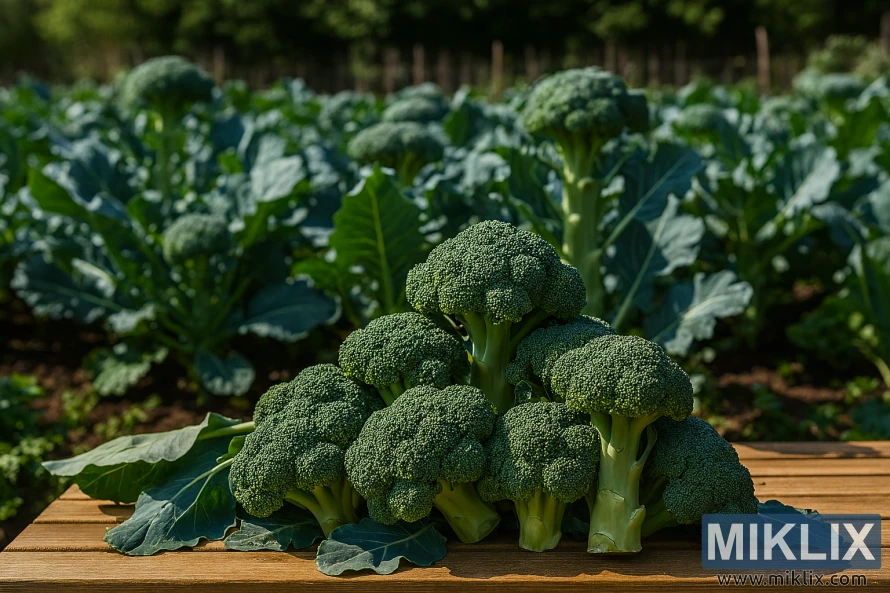
Further Reading
If you enjoyed this post, you may also like these suggestions:
- Guide to Growing Perfect Pears: Top Varieties and Tips
- The Best Plum Varieties and Trees to Grow in Your Garden
- A Guide to Growing the Best Elderberries in Your Garden
